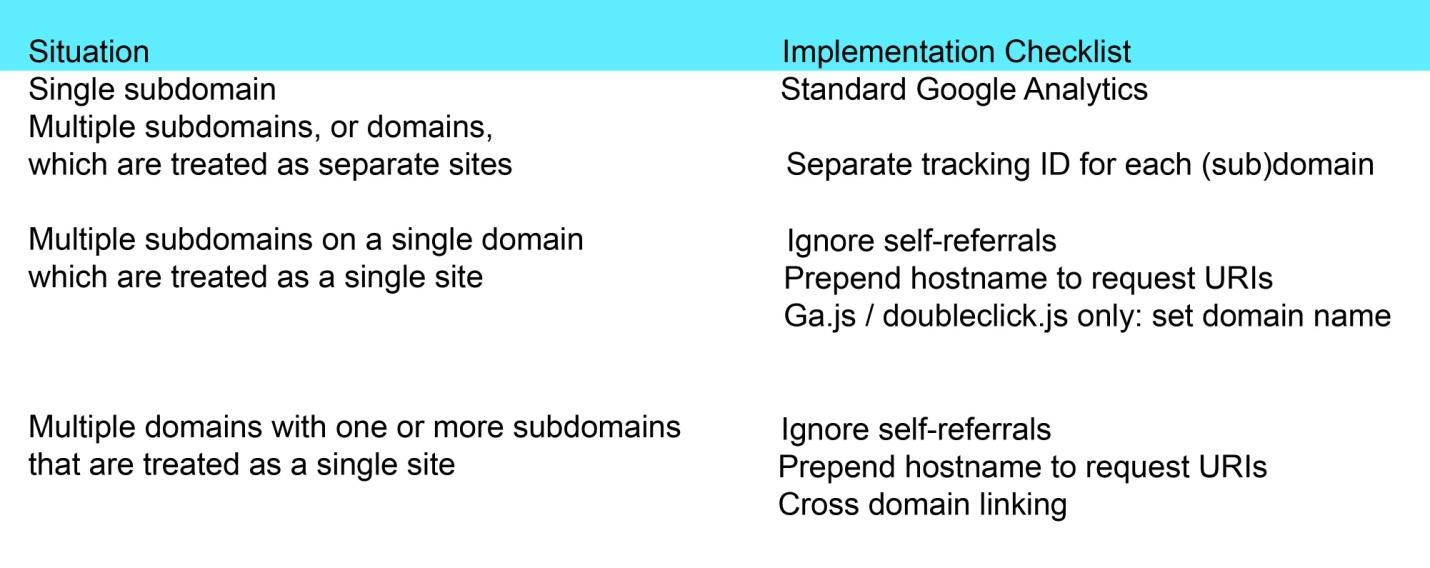Google Analytics can not handlethe tracking of multiple domains and is the most common critical problem.
Listed simple steps in the left-hand side below helps to track the and make the steps listed on the right:

ga.js / doubeclick.js: Your source code will contain several “_gaq.push” commands
analytics.js tracking code: Your source code will contain “ga(‘create'” and “ga(‘send'” commands
Google Tag Manager:
The Google Tag Manager account has analytics tag also assumed as a Universal Analytics.
For old code in the new interface of Google Analytics one should follow this tracking code:
(ga.js / doubleclick.js).
Using Separate Tracking IDs
The extraordinary codes in Google Analytics look like “AU-987654-2”. If a little attention is given, then one can send the information using this property.
Using same tracking ID in many domains using sorting feature, is having an access to one aggregated view. One must protect the tracking ID, in order to ignore tough competition, as thedomain-specific clicksgives a load on “direct” traffic.
It leads to give an incorrect data by aggregate view and specific view. An inappropriate data could lead to lack in tracking ID used across all sites. Google’s guidelines by use of Google
Tag Manager helps in implementation.
Ignoring Self-Referrals
A “self-referral” is important and generate traffic to a site, but it makes the thing difficult to work out without effective conversions and by missing data related to a few sessions. It also triggers new sessions, that becomes tough to track the routes to individual website.
If one has the old ga.js (or doubleclick.js) tracking code, they can add domains as ignored referrers in tracking code:
If you’re using analytics.js tracking code, it’s even easier:
Prepend Hostname to Request URIs
URIs let one set a dimension like “landing page”, “page” or “previous page path”.Any presence of multiple domain creates a risk of data from the number of pages that is similar to other pages.
Example: “blog.example.com/index.html” and “example.com/index.html”, these will be merged in reports under “/index.html”,
How To Overcome From It?
In the above example one can see: “www.example.com/index.html”as a page in reports, rather than just “/index.html”, and metrics that deny on creatinga difference between the pages.
Ga.js / doubleclick.js only: Set domain name
A new analytics user has a compulsion to use .js tracking code in Google Tag Manager. It affects the cookie location.A simple additional line in tracking code, between the “_setAccount” and “_trackPageview” lines:
Always set domain without any subdomain for better result.
Cross-Domain Linking
Google Analytics takes the cookie on the domain as the page by default. If the cookie is not assumedthen google consider it as a new session.The autoLink plugin for analytics.js. help to get rid of it. The Google’s latest analytics tracking code, justify the upgrade on its own. Tells analytics.js to check whether the linker parameter exists in the URL and is less than 2 minutes old
Loads The AutoLink Plugin
The autoLink command helps the parameters in the anchor portion of the URL, and enables form/li decoration.Now one can set the multiple domain issue and invalidate the date easily using plugin.
Wind Up:
Google Analytics is the most recommended SEO tool used by most of the companies. It is required to know about its updates. Platinum SEO, a Professional SEO Company in Melbourne provides all the necessary updartes and also adapts them while developing a result oriented SEO Strategy.